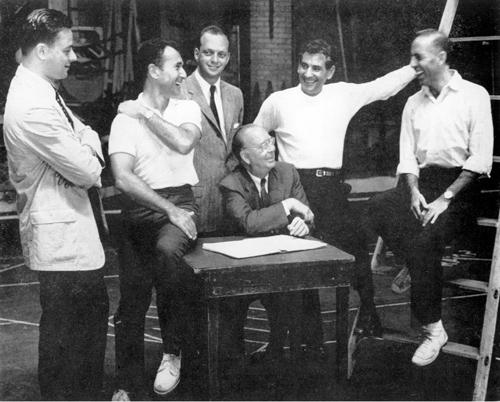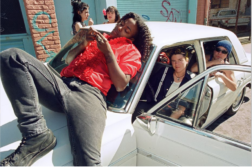ON SEPTEMBER 26, 1957, West Side Story premiered on Broadway at the Winter Garden Theater and was instantly hailed as a milestone in the history of American musical theater. Arthur Laurents’ script presented an updated version of Shakespeare’s Romeo and Julietin which the star-crossed lovers were placed in Manhattan in the 1950s. Shakespeare’s Romeo became Tony, the son of Polish immigrants, and Juliet became Maria, a teenager who had recently emigrated from Puerto Rico. The feuding Capulets and Montagues had their counterparts in the rival gangs known as the Jets and the Sharks.
Infused throughout West Side Story is a gay sensibility that’s expressed subtextually in the relationship between the hero Tony and Riff, the leader of the Jets, and choreographically through the homoeroticism of the all-male dance sequences. Equally bold is the inclusion of the character named Anybodys, a teenage girl who identifies as a male and longs to be accepted as a full member of the Jets. Anybodys is Broadway’s first transgender youth.
Along with Arthur Laurents, composer Leonard Bernstein, director-choreographer Jerome Robbins, and lyricist Stephen Sondheim were all in various stages of coming to terms with their homosexuality in the oppressive atmosphere of 1950s America. With the exception of Sondheim, the creators of West Side Story had narrowly escaped professional ruin during the anti-gay and anti-Communist witch hunts of the McCarthy era. By 1957, the persecutions were essentially over, the far Right was in retreat, and West Side Story afforded four gay men an opportunity to create a work of art that challenged prejudice and affirmed the power of love in defiance of social norms.
Reviewers praised West Side Story for its sociological boldness and for changing the face of the American musical theater, but they did not comment, at least publicly, on the gay subtext of character relationships or the homoeroticism of the dancing. Sixty years after its premiere in New York City, the musical deserves to be revisited, including the gay elements that tiptoe through the story along with an overall gay sensibility that shows up in the story, the lyrics, and the dancing. The sexual proclivities of the four collaborators, far from being irrelevant, served as a rich source of creative inspiration.
David LaFontaine is a professor in the English Department at Massasoit Community College in Massachusetts.








Discussion5 Comments
Anyboys is a girl! it is so beyond offensive to take a character that is a tomboy and say she is really a boy. I will be sticking to the 1961 version where tomboyish girls are not being told that they are trans.
Agreed.
Agree I was a tomboy in the 1960s and 70s. I was just good at running climbing fences etc. I was better than some boys.
I could not agree with you more, Ivy! Thanks for some good points that are well taken.
Riff is bi I believe I haven’t read the whole article sorry if you already mentioned it